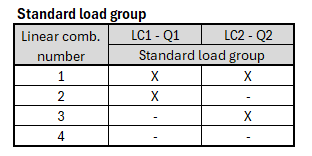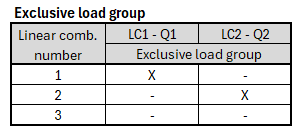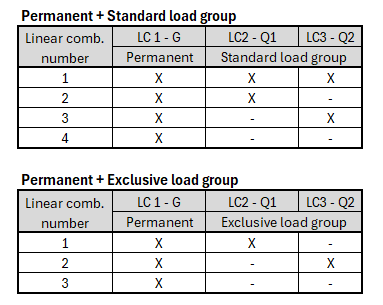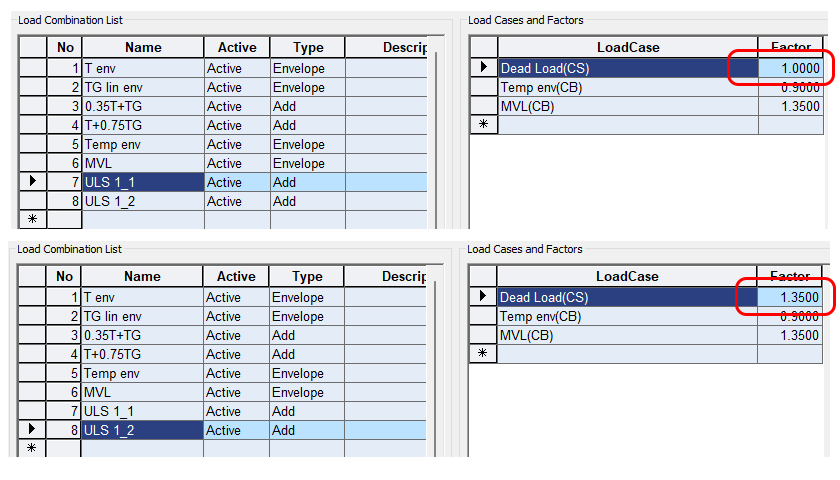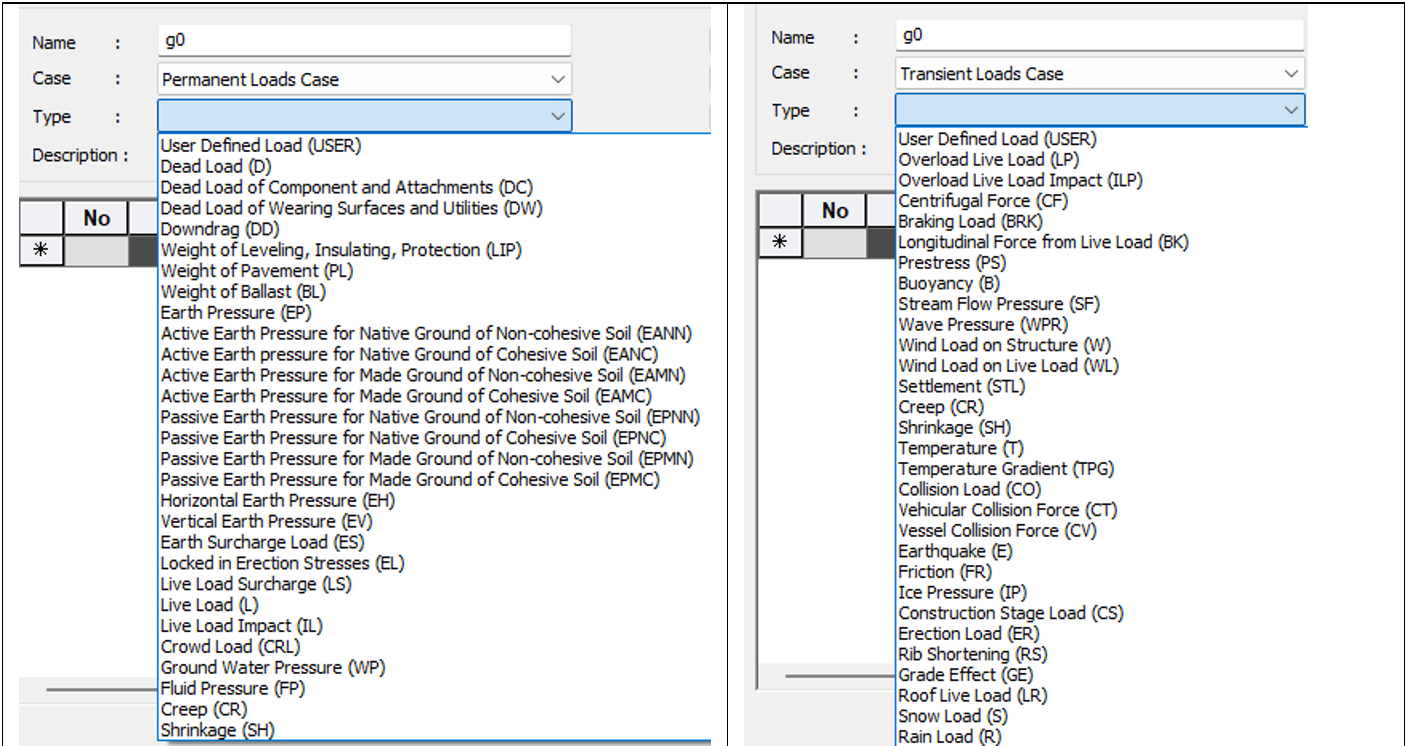Midas Civil BIM link – logic of load cases and combinations postprocessing in IDEA StatiCa BIM
This extension text is suitable for a detailed understanding of the issues and for solving non-standard situations during the import midas Civil – IDEA StatiCa. This article is part of a series of three articles that comprehensively cover the issue of importing internal forces into IDEA StatiCa BIM from midas Civil. The other two articles are the following:
- Midas Civil BIM link – preparation of the calculation model – This article defines the principles of working with a BIM link and, particularly, the guidelines for preparing a calculation model in midas Civil.
- Midas Civil BIM link for design of three-span post-tensioned bridge – A practical example of importing results from the calculation model of a prestressed, three-span, T-girder bridge into IDEA StatiCa BIM.
1. Combinations in midas Civil
Midas Civil works with Add and Envelope type combinations. As every midas user knows, combinations are then treated as "layers". Each Add or Envelope type combination defined in a layer (N-1) can be used to define a set of combined items in an Add or Envelope type combination in layer N. This is how the standard SLS and ULS combinations are built in sequence. Importantly, no summation of load effects is ever performed within an Envelope combination. Still, the maximum and minimum load effects are always evaluated from a specified set of load cases and load combinations defined in the previous layer.
2. Combinations in IDEA StatiCa BIM
Now, let us describe the basic logic of combining load cases in IDEA StatiCa BIM. The BIM app works with four basic types of combinations:
- Eurocode (6.10)
- Eurocode (6.10 a,b)
- Envelope
- Linear
2.1. Code-dependant combinations
The code-dependant combinations behave the same as the envelope combinations (see below). Still, the BIMa app automatically generates load and combination factors according to the code description and the relevant equations. For Eurocode, equations 6.10 or 6.10a,b are used for ULS combinations, equation 6.14b for SLS characteristic, equation 6.15b for SLS frequent and equation 6.16b for SLS quasi-permanent combination. However, the load and combination factors are entered within the combinations defined in midas Civil. Thus, code-dependant combinations are not relevant when importing data from midas Civil. They are here to import internal forces from other programs to the IDEA StatiCa BIM.
2.2. Linear combinations
A linear combination of load cases is a simple sum combination. The internal forces from the individual load cases in the combination are arithmetically summed. The linear combination is thus equivalent to an Add-type combination in the midas Civil.
2.3. Envelope combinations from variable load cases
On the other hand, the meaning of the Envelope-type combination in IDEA StatiCa BIM and the Envelope-type combination in midas Civil is significantly different when working with load cases. An envelope combination of load cases in IDEA StatiCa BIM is an envelope of Linear combinations that are generated based on a combination rule and the classification of load cases into load case groups. Thus, a set of individual summed Linear Combinations is first generated within the Combination Envelope. Then, the maxima and minima are evaluated from this set - i.e., the max and min envelope.
As already mentioned, in midas Civil, the values of internal forces, e.g., are never added in the Envelope-type combination. Still, the max and min values are always directly evaluated from the load cases and combinations. However, when Envelopes and Load case Groups are used correctly in IDEA StatiCa BIM, they behave in the same way as envelopes in midas Civil. However, we will explain this in detail later.
First, let's illustrate the function of the Envelope Combination in the BIM app using an example. But before that, we need to explain the concept of a Load Case Group. For the purpose of creating Envelope Combinations in IDEA StatiCa BIM, individual load cases are categorized into so-called Load Case Groups. Each load case group, and thus all load cases included in it, has an important parameter called Type. The Type of a load case group defines the interrelationships between the cases and thus governs what will and will not be combined with what is in the summed linear combinations (which then make up the envelope).
IDEA StatiCa BIM distinguishes seven groups:
- Permanent
- Standard
- Exclusive
- Fatigue, exclusive
- Accidental, standard
- Accidental, exclusive
- Seismic, exclusive.
For the purposes of this article, we will deal only with the first three groups.
Permanent type group
The values from the Permanent load cases are always included in the linear combination, so they are present in each of the linear combinations.
Standard type group
Load cases from the Standard-type group can occur in individual sub-linear combinations (from which the envelope is then evaluated) alone, all simultaneously, or just a subset of them. All possible variants of "co-occurrence" of load cases are automatically generated.
Example no. 1: Envelope of variable load cases of Standard type
Consider two load cases of the variable load type, which are classified in the group of load cases of the Standard type. The table below shows the different linear combinations. As can be seen from the table, in the case of the Standard type, the envelope will consist of four linear subcombinations.
Exclusive type group
For load cases of the group of Exclusive type, only one load case from the group is used in each linear combination.
Example no. 2: Envelope of variable load cases of Exclusive type
Let’s consider two load cases of the variable load type included in the same Exclusive type group of load cases. The table below shows the individual linear combinations. As can be seen from the table, in the case of the Exclusive type group, the envelope will contain three linear subcombinations.
When applying the Envelope type combination to the load cases in the Exclusive type group, each of the linear subcombinations contains only one load case, and an additional null, empty combination is automatically added (we will return to this later). From the perspective of the midas Civil user, it is crucial to note that applying the envelope combination to the Exclusive type group of load cases results in the same outcome as applying the Envelope combination to the identical group of load cases in midas Civil. Although the logic of the combinations is slightly different, by correctly setting up the combinations, identical results are achieved in IDEA StatiCa BIM as in the source midas Civil file.
For completeness, we should also add that the envelope combination from two different Exclusive type groups of loads will not work the same as the Envelope combination in midas Civil because, in the linear subcombinations, only one state from the first Exclusive type group and one from the second can appear simultaneously. Therefore, within a single envelope combination, it is necessary to ensure that all variable load cases are within one Exclusive-type group.
2.4. Envelope combinations from a mixed set of permanent and variable load cases
In the IDEA StatiCa BIM software, Permanent load cases are always added to the envelope from the variable load cases in the envelope combination. The BIM app implements this logic to ensure compatibility with other programs, such as Scia Engineer.
In contrast, the Envelope combination in midas Civil will always function as a "pure envelope" (mathematical evaluation of max and min; nothing is added) from the set of load cases, regardless of whether the included load cases are permanent or variable. Thus, the envelope combination of the same mixed set of load cases will yield different results in midas Civil than in the IDEA StatiCa BIM. We will explain this with an example.
Example no. 3: Envelope of variable and permanent load cases in one combination
Let us now consider three load cases. The load cases are assigned to two groups. The first group is of the Permanent type and contains load case LC 1. The other two load cases, LC 2 and LC 3, are variable and are assigned to the second group of load cases, either of the Standard or Exclusive type. The tables below again show the individual linear combinations of these load cases in the BIM app, depending on the type assigned to the second group of variable load cases.
From the table, it is clear that the permanent load case is included in every linear (sum) subcombination, from which the envelope is subsequently evaluated. This leads to the rule for creating combinations in midas Civil – do not use Envelope combinations on a set of load cases where both permanent and variable load cases are present, or only permanent load cases! This rule can be easily respected, and again, it holds true that the results will be identical with proper preparation of the calculation model in midas Civil.
2.5. Envelope combinations from load cases with the same sign
Another difference between the midas Civil and the BIM app arises when evaluating the envelope from a set of variable load cases with the same sign for internal forces. In other words, in a specific section, the internal forces from the individual load cases always have the same sign. Of course, the sign may change along the length of the structure.
For example, let us consider a group of three load cases in the same Exclusive type group, which in a given section have the following moment values: {20 kNm, 30 kNm, 40 kNm}. BIM app will then evaluate the maximum moment as 40 kNm and the minimum moment as zero. This is because, as shown earlier, when evaluating the envelope combination of variable loads, an additional "empty," zero combination is included, representing the state where no variable load is applied to the structure.
On the other hand, midas Civil strictly follows mathematical logic when evaluating the Envelope combination and will evaluate the minimum as 20 kNm and the maximum as 40 kNm. In other words, the consideration that no load case may be applied to the structure is left to the user, who can easily achieve this by adding a zero (empty) load case to the Envelope combination. Then, the results from the Envelope combination in IDEA StatiCa BIM and midas Civil will be identical. Of course, this is a rare situation, as most Envelope combinations of variable loads in bridge analysis are made from load cases with different signs of internal forces in individual sections (e.g., Wind_Y+; Wind_Y-). In these cases, the Envelope combinations in IDEA StatiCa BIM and midas Civil are identical, and adding a zero load case to the combination in midas Civil is unnecessary. Based on the above, the following rule applies: If individual load cases in the Envelope combination in midas Civil give all forces with the same sign, adding a zero load case to the Envelope combination is necessary.
2.6. Linear and envelope combinations from combinations and load cases
The BIM app adopts the combination rules from midas Civil, so it must also perform linear and envelope combinations, as defined earlier (one level lower), just like midas Civil. Unlike working with load cases when dealing with combinations, the logic of linear and envelope combinations is now identical to the Add and Envelope combinations in midas Civil. This means that for envelopes derived from combinations, the BIM app always evaluates the envelope purely mathematically (max and min effects). There is no longer a distinction between standard or exclusive type groups for envelopes.
Based on Chapter 2.4, the reader might wonder how an Envelope combination, transferred from midas Civil, will be evaluated in the BIM app if it is created from a mixed set of elements, i.e., from load cases and combinations. Let’s explain this again with an example.
Example no. 4: Envelope from Combinations and Load Case Set
Let’s consider three load cases, LC 1, LC 2, and LC 3, which are of the same type, so they are all in one exclusive load group in the BIM app. Additionally, let’s consider an Add type combination C1 in midas Civil. In midas Civil, an Envelope combination C2_env is then defined from the group {C1; LC1; LC2; LC3}. The Envelope combination C2_env in the BIM app will then be evaluated purely as an envelope, meaning:
- maxC2 = max{C1; LC1; LC2; LC3}
- minC2 = min{C1; LC1; LC2; LC3}
There will be no addition of elements, as described in Chapter 2.4, where the envelope set of elements comprises an exclusive load group and a permanent load case.
Let’s now analyze another common case of working with permanent loads and envelopes, which often occurs in bridge analysis and might raise questions due to the specifics of how permanent loads are handled in envelope combinations in the BIM app. The example involves considering the lower and upper values of the permanent load, where, for example, the factor for the lower value is 1.0, and for the upper value, the load factor is greater than 1.0 (typically 1.35 or 0.85 x 1.35 = 1.15).
Example no. 5: Consideration of the envelope for the upper and lower values of permanent load
Let’s consider in midas Civil one load case for Dead Load, a thermal envelope combination Temp_env, and a moving load envelope MVL. According to the design code (Eurocode), it is necessary to account for two Ultimate Limit State (ULS) load combinations:
- 1.0×Dead load + 0.9×Temp_env + 1.35×MVL
- 1.35×Dead load + 0.9×Temp_env + 1.35×MVL
There are two correct ways to set up the combinations to match the results in midas Civil and IDEA StatiCa BIM.
The first option is to create two separate Add combinations in midas Civil, which will be transferred to the BIM app as linear combinations, thus avoiding any issues described in Section 2.4.
The disadvantage of the abovementioned solution is that it leads to a doubled number of ULS Add combinations in midas Civil, once with a factor of 1.0 and second with 1.35. Therefore, users often proceed by preparing an Envelope combination for the Dead Load. To correctly construct the envelope, "auxiliary" Add combinations are used, and the combination rules would be as follows:
- Add combination Dead_1.0 – load case Dead load, factor 1.0
- Add combination Dead_1.35 – load case Dead load, factor 1.35
- Envelope combination Dead_env – two elements: {Dead_1.0; Dead_1.35}
For combination no. 3, an envelope from combinations is used, so it will be evaluated correctly in IDEA StatiCa BIM as a max/min envelope, unlike the situation where an envelope would be created from two permanent cases, which would be summed in the BIM app envelope combination. The Dead_env is then used in an Add combination in Midas Civil, so the number of ULS combinations is reduced by half compared to the first solution.
3. Work with load cases of the permanent type from the Construction Stage Analysis
As described above, the specificity of working with load cases of the permanent type in the BIM app is that they are always arithmetically summed, even in the envelope combination. Another issue with processing permanent load cases may arise if Construction Stage Analysis is used in midas Civil. This will be explained in the following section.
The analysis of, for example, a prestressed bridge in midas Civil is performed in two steps:
- Construction stage – Construction stage analysis, including prestressing and rheological effects.
- Post-construction stage (Post CS or Completed stage) – static analysis of variable loads (temperature, wind, traffic, settlement, etc.) on the finite element model of the completed structure.
The following load cases are the results of the construction stage analysis:
- Dead load
- Erection load
- Tendon Primary
- Tendon Secondary
- Creep Secondary
- Shrinkage Secondary
For example, permanent loads are included only in one load case, Dead load, which represents the cumulative permanent loads from all stages at the end of construction – the final stage. On the other hand, after being imported into the IDEA StatiCa BIM, the cumulative dead load state is split into incremental cases according to the construction stages – one for the start and one for the end of each stage. This is done so that the BIM app can "replicate" the staged calculation of the structure and, for example, correctly set up the prestressing procedure and the initial cross-section state for the IDEA StatiCa RCS check. The individual incremental cases in IDEA StatiCa BIM are named DL<stage name>[F] for the start (First step) of the stage and DL<stage name>[L] for the end (Last step). All of these cases are grouped into a load case group named Dead load, as shown in the following image.
Similarly, other load cases (Tendon Primary, Tendon Secondary, etc.) are divided in IDEA StatiCa BIM and, after import, assigned to the corresponding load case groups. All of these groups, representing the results of the Construction Stage Analysis, are of the Permanent type. The individual cases in the BIM app are automatically assigned to the imported combinations from midas Civil. For example, where a cumulative Dead load case with a factor of 1.35 was used in a midas Civil combination, in IDEA StatiCa BIM, it is automatically replaced by the entire group of individual cases DL<stage name>[F] and DL<stage name>[L], all with a factor of 1.35.
However, a problem arises when a load case from the PostCS analysis (variable loads – temperature, wind, etc.) is incorrectly assigned the Permanent type after being imported into the BIM app. This situation most commonly occurs if the type Dead load or USER is incorrectly set for a PostCS load case in midas Civil. IDEA StatiCa BIM then treats these permanent load cases as results from the Construction Stage Analysis and attempts to "find" them in combinations representing individual steps of staged construction. Since they are not there, IDEA StatiCa BIM does not know where to place them, and when performing a cross-section check, it generates an error message: "The combination is not applicable for cross-section design because the permanent load cases contained in this combination do not correspond with permanent load cases defined in the construction stages."
These errors can easily be avoided by correctly setting the types for individual load cases in midas Civil. This means that permanent load cases (Permanent load case) should only be used for Construction Stage Analysis, and variable load cases (Transient load case) should be used for Post CS analysis. Then, after exporting to IDEA StatiCa BIM, the permanent type will be reserved only for the results of staged construction, and the problems described above will not occur.



